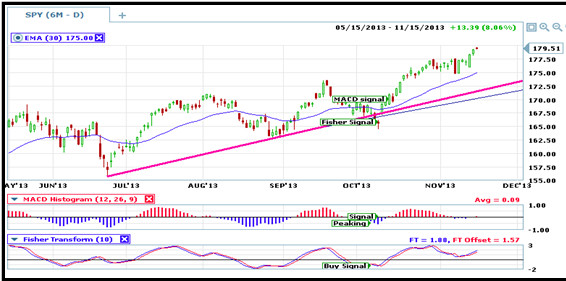Fishing for Profits with the Fisher Transform Indicator
There are a lot of indicators out there. You have to check out a dozen to find one gem. I thought I was fishing for another so-so tool for this week’s article but what I found has shocked me. This may be the best indicator for trading FX, CFDs, Crypto and BO.
Full Review of the Fisher Transform Indicator for FX, CFD, Crypto and BO Trading
This an oscillator intended to predict price reversals in the market. It is based on complex mathematical theories that I have never heard of, such as probability density functions, and others that I have. In simplified terms, it transforms the ordinary Brownian and stochastic functions into something completely different. One thing to note is that the Fisher Transform indicator can be applied to prices as well as other indicators. It displays on a chart as a pair of lines moving above and below 0 with extremes at both sides. The indicator uses two lines that track closely together, one is the current Fisher Transform Line (FTL) and the other, the signal line, is the Fisher Transform Line (FTL) from one day ago. A signal, bullish or bearish, is generated when the FTL crosses above or below the signal line and/or when the indicator reaches bullish or bearish extremes.
How does the Fisher Transform Indicator Works
The indicator transforms prices into a sine wave that seeks to pinpoint extremes in the market. Extremes where prices are likely to revert to a more normalized level. The wave can be based on opening, closing, high, low or average prices and can be smoothed or not. The basic signal occurs when the current FTL line crosses over or under the signal line but other, many strong signals occur when the indicator reaches extreme levels. In a sense it is a form of mean reversion, when prices reach extreme levels when compared with recent price action then the indicator will also reach an extreme level. Once that extreme is reached a reversal to the mean prices can be expected.

Why the Fisher Transform Indicator Doesn’t Suck
At first glance this indicator looks like it might be a good one for any type of trading, whether we are talking about Forex, Contracts for Difference, Cryptocurrencies or Binaries. Signals appear to be fairly straight forward and when you combine the two together they appear to be especially strong. Looking at the Fisher, it gives a signal in early October that it is a reversal of the bearish extreme and a bullish crossover. This signal comes when the asset is testing long term support and is confirmed by the MACD later on. Based on this chart I would say that it is possible the Fisher Transform Indicator could be better than MACD for giving early signals. Fisher can also be used in other ways similar to MACD, stochastic and other oscillators. It can be used for long term peak analysis for trend, support/resistance and divergences. Look at it compared to MACD, the FTL line tracks nearly identical to the rise and fall of the momentum peaks.
Why the Fisher Transform Indicator Might Suck
I can’t think of any individual reason why this tool might suck. It appears to be a good and useful tool and one that I will most definitely keep using. However, like all tools even this one must suck sometime. I suggest using it along with other indicators for confirmation because every good tool is better when it gets confirmed by another. Trend lines, support/resistance and MACD are some good additions.
My Last Words On the Fisher Transform Indicators
Wow. I can’t believe I have never heard or seen this indicator before now. From what I have learned so far this is a fantastic indicator and one that bears more study. The signals are easy and the tool is very adaptable to day trading. It is similar to the PSAR in that it can provide buy and sell signals in any market. The signals it gives the lead to other indicators like MACD. This may be the best indicator I have ever seen but then again, everything looks better in hindsight, so make sure you test this on real-time prices, but on a Demo account until you decide if it’s good for you.
Further Reading:
- Click here for more on the Fisher Transform Indicator.
- Keep talking about the Fisher Indicator on our Forum!